Udo Lindenberg / Zwischentöne/Nuances
Udo Lindenberg / Zwischentöne/Nuances
06/09/2019 — 05/01/2020
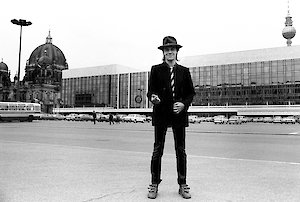
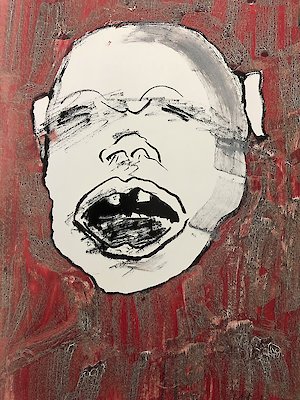
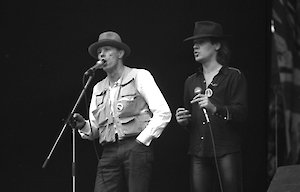
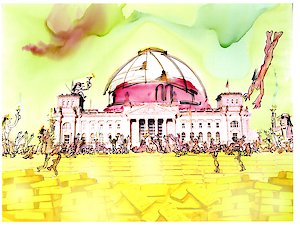
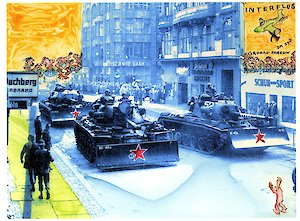

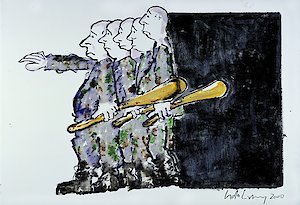


Udo Lindenberg (*1946) is an artist that has proved capable of formulating the desire for freedom and peace as well as criticism of antiquated social structures of an entire generation, in music, painting, graphic art and film. Many of his lyrics and a large part of his visual art carry messages that are delivered to the recipients in unmistakably clear language. On 11 September 1982 he met Joseph Beuys at the concert "Künstler für den Frieden", staged by the initiators of the “Krefelder Appell”. The two became friends and Beuys persuaded Lindenberg to begin using graphic art as a means of expressing his messages. The committed peace and environmental activist Udo Lindenberg had already been involved in campaigning against right-wing violence since the end of the 1970s. In 2001 he joined with friends to initiate the “Rock gegen rechte Gewalt” series of concerts, which in 2002 brought him to Leipzig, where he enjoyed great popularity. Lindenberg had written a new song for this project, “Pimmelkopp” (dickhead), and created a series of paintings under the same title, which can be seen in the exhibition. In 2006 Udo Lindenberg established a foundation, which he uses to support humanitarian and social projects in Germany and Africa.
The title “Zwischentöne” is a reference on the one hand to Lindenberg’s painted articulations of this commitment, addressed in several chapters: for peace, against right-wing violence, for environmental protection, a multicultural Germany and others besides. The second topic area of the exhibition is documentary in orientation and displays Udo Lindenberg’s special relationship with eastern Germany. In his younger years the artist was already a strong supporter of a unified Germany. Taking his inter-German love ballad “Wir wollen doch einfach nur zusammen sein” (1973) as a starting point, both his involvement with the “second Germany” and his desire to perform his songs there became increasingly pronounced. After several attempts over the course of 8 years, in 1983 he was given the opportunity to appear in East Berlin’s Palast der Republik at a communist youth event with the motto “for the peace of the world”. At the press conference in the GDR Akademie der Künste he highlighted the risks of nuclear war and called for disarmament in east and west. He was later refused permission for a tour of the GDR planned for 1984. It was not until January 1990 that his dream of an East German tour was fulfilled, also bringing him to Leipzig. From this point onwards his love for the country and its people has remained undimmed. For the presentation of this personal relationship documentation corridors were erected, depicting the various stages with photographs and other contemporary documents.
“Udo Lindenberg. Zwischentöne” was created at the instigation of Udo Lindenberg to mark the 30th anniversary of the Peaceful Revolution. Curated by Alfred Weidinger in close co-operation with the artist, the exhibition includes 50 paintings and watercolours, some of them large format, around 200 historic photographs from the Archiv Udo Lindenberg, his “Trabi” (one of the last Trabants to leave the plant in Zwickau), the leather jacket presented to Erich Honecker, Honecker’s return gift, the shawm, as well as historic films including the documentation of the 1983 concert at the Palast der Republik.

